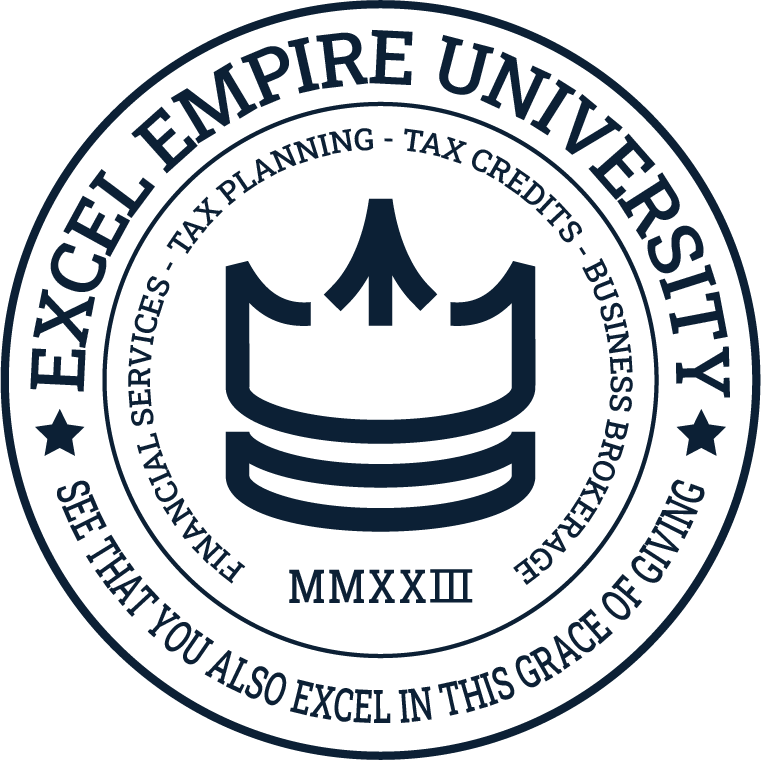We show qualified financial professionals how to level up their practices.
Don’t let higher income trap you into unnecessarily high taxes. Excel Empire can help you save $30,000 to $100,000+ annually through strategic tax planning that goes far beyond basic year-end deductions. Our tax experts will analyze your unique situation and create a custom tax reduction strategy to help you keep more of what you earn. Let us show you how to stop overpaying and start saving.
Excel Empire helps business owners build lasting wealth through strategic tax planning, succession preparation, and retirement optimization. Our integrated approach combines proactive tax strategies, business growth expertise, and exit planning to help you maximize value at every stage – whether you’re scaling up, maintaining wealth, or planning your exit.
Providing proactive tax planning services, tax credits and strategies to legally reduce tax burden for business owners.
Helping business owners prepare for and execute business sales, transitions, and succession planning while minimizing capital gains taxes.
Offering solutions like the “Owner Excelerator Plan” and employee benefits programs that optimize retirement savings and tax efficiency.

Most tax professionals focus on compliance – putting the right numbers in the right boxes. While that work is essential, it doesn’t help you actually pay less in taxes. That’s why Edward Lyon, after decades of helping clients optimize their tax strategy, partnered with Excel Empire to create the Certified Tax and Business Advisor (CTBA) program. This elite certification equips advisors with specialized training to go beyond basic compliance and help clients legally minimize their tax burden through proactive planning.

Chief Tax Planner
Our clients typically save an average of 28%, freeing up tens, hundreds or even millions of dollars to expand their businesses and achieve unprecedented success. Explore the outcomes we’ve achieved for a selection of our clients below.
Excel Empire Chief Tax Planner Ed Lyon is the author of eight books and has trained more than 3,000 CPAs. Dubbed “America’s Funniest Tax Guy,” Ed’s witty style makes learning about taxes fun.